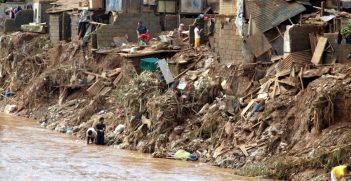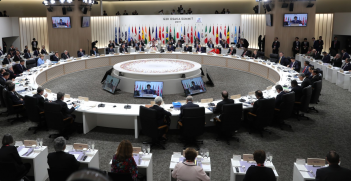Addressing Climate Change to Reap Health Benefits

After the US announced its withdrawal from the Paris Agreement, Australian foreign minister Julie Bishop, speaking at the EU-Australia Leadership Forum, said she sees a role for partnership between Australia and the EU in implementing the climate accord.
In September and November 2016 respectively, the European Union and Australia ratified the latest global treaty on climate change, the Paris Agreement. In doing so, both parties committed to addressing climate change and taking strong action to reduce the risks of potentially irreversible economic, environmental and social impacts. The commitment is timely: climate change impacts are already being felt and will be exacerbated as the global average temperature rises, disproportionately affecting vulnerable populations such as children and the elderly.
Medium-term projections of climate change predict significant impacts including increased duration, frequency, and severity of extreme weather events such as heatwaves and floods. The World Health Organization estimates that between 2030 and 2050, an additional 250,000 deaths annually will be attributable to climate change, primarily from malnutrition, malaria, diarrhoea and heat stress. Recent OECD estimates indicate that in the absence of further climate action, the economic consequences of climate change will outpace global economic growth, adversely affecting global annual gross domestic product by between 1 per cent and 3.3 per cent by 2060.
Harnessing synergies
Globally increasing exposure to extreme climatic events and disasters highlights the need to harness synergies between ongoing climate change mitigation, adaptation and disaster risk reduction (DRR) efforts. The Sendai Framework for Disaster Risk Reduction (SFDRR) is the principal global treaty to guide DRR efforts across 187 UN member states between 2015 and 2030. The SFDRR places a strong focus on health and aims to achieve substantial reductions in global disaster mortality, the number of people affected (by injury or illness), disaster-related economic losses, damage to critical (health) infrastructure, and disruption of basic (health) services.
The SFDRR implementation reflects an important shift in approach—away from addressing disaster impacts, and towards managing and reducing disaster risks—which resonates deeply with climate change mitigation policy, and which has practical implications for the way in which societies understand and address disaster risks across varied sectors and health domains. Ongoing SFDRR implementation at European regional and national levels presents vital learning opportunities to inform effective DRR and climate change adaptation strategies with a view to reduce the risk of extreme climatic events and associated health impacts in Australia and the Asia-Pacific.
Furthermore, shorter-term opportunities exist to reduce the risk of domestic and regional economic, environmental and social impacts, and enhance local health outcomes. While it can be difficult to quantify the potential benefits to health from avoided climate change, methods have been developed to estimate the (health) benefits that result from greenhouse gas emissions reduction. For example, the United States Environmental Protection Agency estimated that implementing the Obama administration’s Clean Power Plan would result in up to 3,600 fewer premature deaths, up to 90,000 fewer asthma attacks in children, and up to 300,000 fewer missed school and work days, accumulating to economic savings of up to US$54 billion (AU$73 billion) in 2030 alone.
Accordingly, when governments consider the shorter-term, localised health co-benefits of emissions reduction that result from efforts to tackle the longer-term issue of climate change, committing to increasingly ambitious and robust climate change policies becomes a practical and logical response. These ‘win-win’ policies simultaneously resonate with the public and tangibly demonstrate to industry that climate change can directly impact their bottom lines, for example, through labour productivity.
Future directions
The EU and Australia share a strong bilateral relationship that encompasses common values around sustainable development and a commitment to adequately address climate change. The EU and Australia are both in favourable positions to continue their efforts in demonstrating strong leadership in global climate and disaster risk reduction policies. Continuing to meaningfully incorporate social costs into policy in future will allow both parties to reap the benefits of climate action and disaster risk reduction by supporting increasingly ambitious commitments to emissions reduction targets, as required under the Paris Agreement, without unnecessarily compromising interests and economic progress.
Dr Lennart Reifels is a research fellow at the University of Melbourne, visiting research fellow at the Free University of Berlin, and recipient of an EU Scholar in Residence Award from the EU Centre on Shared Complex Challenges, whose recent work examined the implementation of the Sendai Framework for Disaster Risk Reduction in Europe.
Annabelle Workman is a PhD candidate at the EU Centre on Shared Complex Challenge at The University of Melbourne, exploring the role of health in the development of national climate change mitigation policies.
This article originally appeared in The EU and Australia: Shared Opportunities and Common Challenges, published on the occasion of the inaugural EU-Australia Senior and Emerging Leaders’ Forums in Sydney on 2–6 June 2017. The AIIA is part of the international consortium selected to deliver the EU-Australia Leadership Forum project, a three-year initiative funded by the EU.





